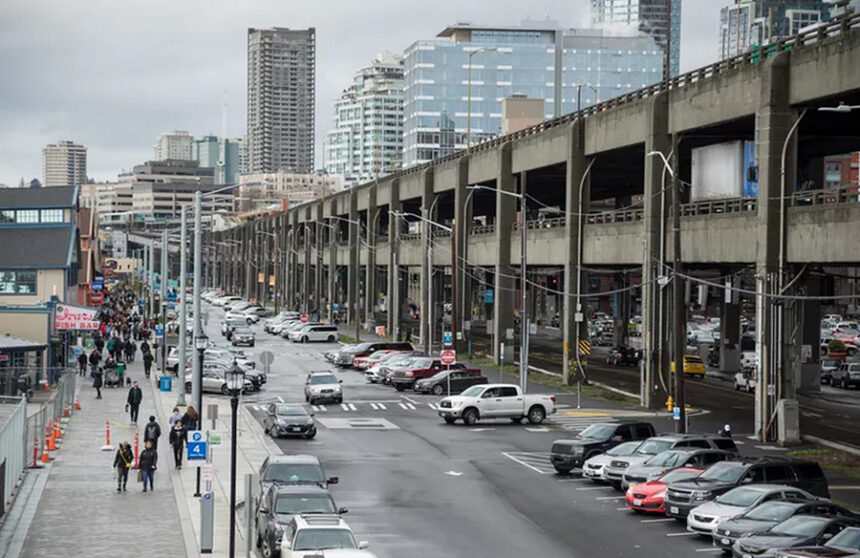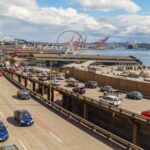Seattle’s Alaskan Way Viaduct, a defining feature of the city’s landscape, is set to bid farewell on January 11th at 10 p.m., marking the end of an era. This 2.2-mile elevated highway, once a bustling route for motorists, will be replaced by an underground roadway, promising a new chapter in Seattle’s infrastructure.
![]()
Safety Concerns Drive Demise
The decision to dismantle the viaduct isn’t solely due to its age surpassing its intended lifespan of 50 years. Safety concerns have long plagued this elevated structure. Events such as the 1965 and 1971 earthquakes, both locally and in California, raised alarms among residents. However, it was the aftermath of the 1989 Loma Prieta earthquake, which wreaked havoc on elevated roads in California’s Bay Area, that intensified worries about the viaduct’s safety.
The Nisqually earthquake in 2001 served as a stark reminder of the viaduct’s vulnerability, with damaged support columns and cracked joints. Recognizing the potential devastation a stronger earthquake could inflict, the decision to retire the viaduct became imperative, especially as sections of it were sinking.
A Controversial Transition
Transitioning from the viaduct to an underground tunnel wasn’t without its challenges. Delays plagued the project, from funding issues to technical problems with the tunnel-boring machine, Bertha. Despite these setbacks, the new roadway is slated to open during the week of February 4th, offering a safer and more modern alternative for commuters.
![]()
Embracing Urban Renewal
Seattle’s decision to remove the viaduct follows successful precedents set by other cities like San Francisco and Manhattan. Projects such as the removal of San Francisco’s Embarcadero Freeway and Manhattan’s West Side Highway have revitalized urban landscapes, prioritizing community needs over vehicular infrastructure.
Aesthetic and Environmental Benefits
While the viaduct provided captivating views for motorists, its presence obscured the waterfront for everyone else. Pedestrians and cyclists were overshadowed by the structure, deprived of light and space. The planned waterfront park promises to transform the area, offering green spaces, bike trails, and unobstructed vistas.
Embracing a Car-Light Future
Seattle’s shift away from car-centric infrastructure reflects a broader trend towards sustainable urban living. As cities grapple with increasing population densities, there’s a growing demand for accessible public spaces and alternative modes of transportation. Removing elevated highways symbolizes a departure from car-dominated landscapes, embracing a more pedestrian-friendly and environmentally conscious urban future.
In bidding farewell to the Alaskan Way Viaduct, Seattle embraces a new era of urban renewal, prioritizing safety, aesthetics, and sustainability in its infrastructure planning.





Leave a Reply